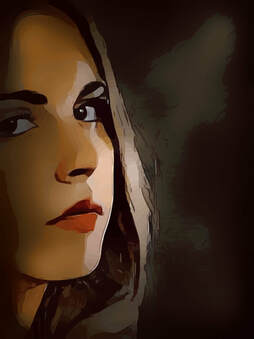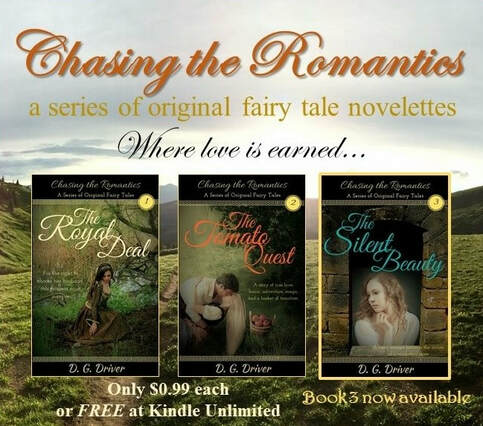 Bullies, mean girls, brats, uncompromising or corrupt adults... Over the course of my writing career thus far, I’ve written a number of dislikable characters. In some ways they are more fun to write than the nice ones. I don’t consider myself a mean-hearted person (I teach babies for a living), so it’s a bit of a thrill to dip into the head of someone who has nothing nice to say or does appalling things. At the same time, writing these kinds of characters is also a challenge for me because I’m kind of a mild-mannered person. I have to work to make the nastiness of these characters believable.  My middle grade novel, No One Needed to Know, is full of bullies who unfairly pick on Heidi and her autistic brother. The point of the book is Heidi overcoming the bullies and hatred so that she can help people learn to be kind toward her brother and others with autism and special needs. So, the bullies had to be awful and do name-calling with a word that makes me cringe. This novel is based loosely on my real-life relationship with my older autistic brother, and we were both bullied when we were young. My daughters were also bullied in school. I had to dredge up what that was like to write these scenes. I can’t say that was particularly fun, but it was important.  The Juniper Sawfeather Trilogy, my YA fantasy series, features several characters that are fairly hateful. The worst of them is Regina, the president of the high school student council who has no use for Juniper until Juniper can provide her access to real-life mermaids. There is also Nick, the high school boy determined to make of fool of Juniper in the school yearbook, and Mrs. Slater, the vice principal who clearly hates teenagers and Juniper most of all. Within her family, Juniper’s mother isn’t the most likeable woman, and her uncle Nathan is a tough pill to swallow. All of this ugliness is necessary for the series in order for Juniper to feel isolated and to force her into action. Most of the characters in the small-town setting of my YA adventure novel Lost on the Water – A Ghost Story are welcoming, but not all. Chris is a pretty big jerk to the youngest boy in the group, Alex, and newcomer Dannie. He even insists that Alex just ‘wimped out’ on the kayaking-camping trip and paddled home, refusing to believe Dannie that the boy is lost and needs help. When he finds out that Dannie isn’t really a boy, well, there are some less-than-kind words about that, too. I get attached to my protagonists. I don’t want them to suffer or feel hurt. I guess I think of them as my children, and my instinct is to protect them. When I write a scene where another character is bullying my heroine or treating her badly, it feels icky inside. It’s weird knowing that these awful words and actions are coming out of me, and yet they do. I wrote a scene in my upcoming YA romance All the Love You Write (July, 2019) where Bethany’s friends are being very critical of her relationship with Mark and are tearing her down. I remember tweeting after I wrote the scene about how much I hated those two girls and what they were making me do to my sweet leading lady. Still, it’s necessary, right? We can’t just have happy stories where nothing bad happens. Antagonists exist to make trouble for our protagonists. It’s absolutely necessary for creating an interesting plot or character development. That said, antagonists don’t have to be villains. They don’t have to be the obvious ‘bad guy’. They can simply be the people planting doubt or creating the obstacles.  But… What if my main character is the awful person? I have a certain admiration for people who write thrillers or horror novels where the book dips into the mindset of the villain. I’m currently reading Remember Me by D. E. White where there are chapters told in first person from the serial killer’s POV. It’s creepy. It’s effective. Still, this isn’t quite the same as writing a hateful main character of a story that is not horrific and hoping the reader will stick with her to see where this is going. I think of characters like Dr. Gregory House from the TV show House. That show was a big hit despite him having the absolute worst temperament. That’s because deep down he was an amazing doctor who would do right by his patients. He had a good side. The audience knew it and trusted it.  What if the main character doesn’t appear to have a good side? With each passing page, she gets more and more vile. What would keep a person reading? I think of someone like Scarlett O’Hara from Gone with the Wind, for example. She’s selfish, vain, and manipulative, among other things. Yet we root for her. We read that massive novel or sit through that 4-hour movie (again) hoping she’s going to become a better person and wind up successful and happy.  Well, I decided to write from the perspective of a character like that. I’ve done it twice now, both times as fairy tales. The first story I wrote was easier because the original plot and main character weren't my original ideas. I took an old Grimm Brothers fairy tale called “King Thrushbeard” and retold it as “King or Beggar”, now published in the anthology Tales of Ever After. In this story, a princess haughtily dismisses every man that asks for her hand in marriage. She’s impossibly rude about it. Finally, her father declares that the next man to arrive at the castle will be her husband. The next man turns out to be a beggar. Oh, what a horrid punishment for this vile girl. I named her Brianna, and she is a rotten thing.  Next, I decided to get braver and try an original story. This fairy tale would be the 3rd in my ongoing series of original fairy tale novelettes. Colleeda, the leading lady of The Silent Beauty, is disgustingly vain and selfish. She doesn’t care about anyone’s feelings—unless it’s adoration for her beauty and lovely singing ability. Life is a flirtatious game until a witch who clearly does not adore Colleeda curses her to never speak or sing again. In both of these stories, the ladies are punished for their awful ways. Deservedly so. The question is: do readers think the punishment is enough or will they read on to find out if the girls ever change and earn the right to a happy ending? Happily, one of the first reviews of The Silent Beauty (which released this past week) read: “The Silent Beauty is an unusual fairy tale, as the beautiful maiden is not one you will like, or even like reading about. Her faults heavily outweigh her looks and her stunning voice. Yet, you’ll likely keep reading. As the tale progresses, you’ll dislike her more and more, as for a change from most fairy tales, she is the evil one. Does she get her comeuppance? You’ll have to read and find out. Like Driver’s first two original fairy tales, the story is well written, detailed, and full of twists and turns.” Another first reviewer wrote: “The main character Colleeda is perfectly drawn as an enticing but altogether pompous character, who is perhaps a woman we would all love to hate, but when circumstances catch up with her ill deeds, we come to wonder if, both, she will be saved and if she deserves it?” It's definitely a thrill when some of the first readers express that they 'get' what you're trying to do. What are your thoughts about the rotten personas infiltrating your books? If you’re an author, do you like writing them? If you’re a reader, do you like reading them? I’d love to hear from you, so please feel free to leave a comment below.
|
D. G. DriverAward-winning author of books for teen and tween readers. Learn more about her and her writing at www.dgdriver.com Archives
July 2024
Categories
All
|
Author D. G. Driver's
Write and Rewrite Blog
“There are no bad stories, just ones that haven’t found their right words yet.”
A blog mostly about the process of revision with occasional guest posts, book reviews, and posts related to my books.


 RSS Feed
RSS Feed